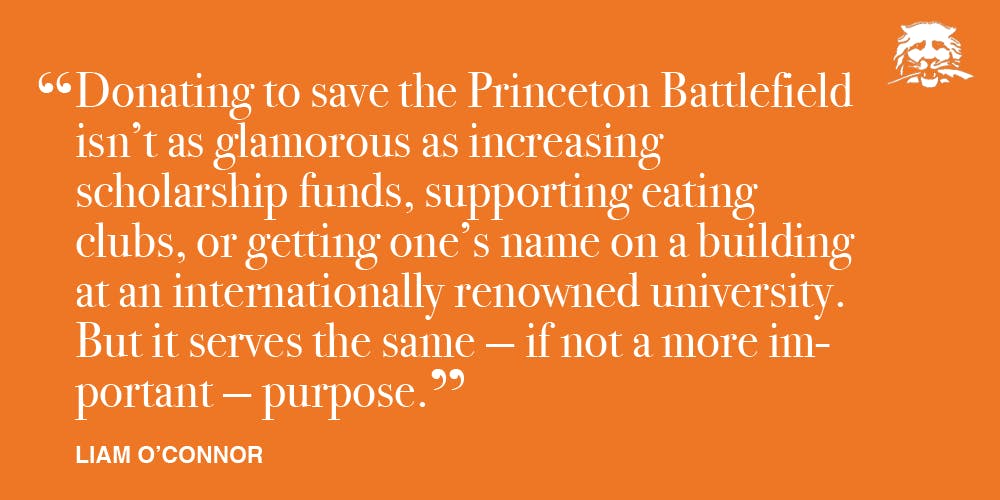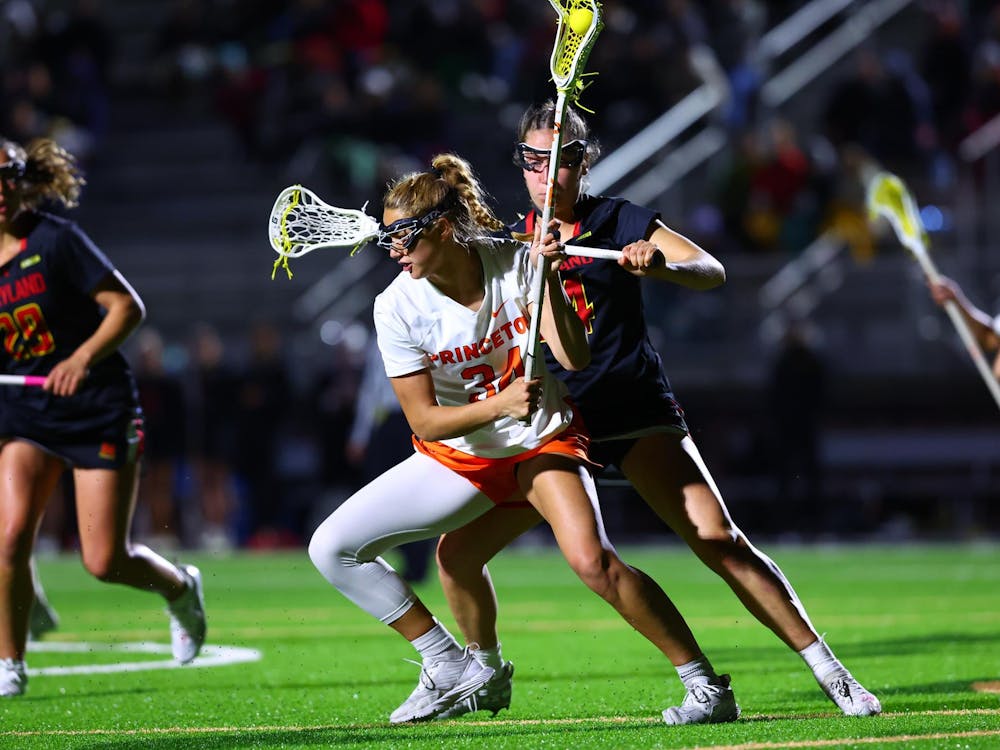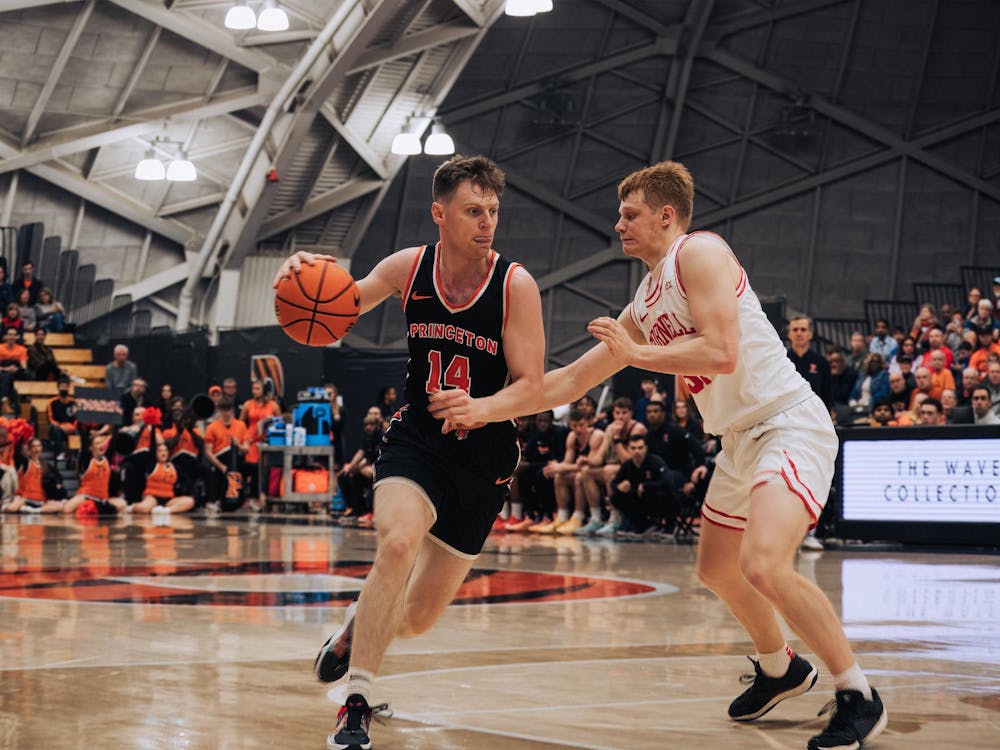For the next few days, legions of orange and black-clad alumni will be walking around the University’s campus. After graduating from the world’s top university, many became wealthy from stellar careers as financiers, entrepreneurs, professionals, and captains of industry. At Reunions, University administrators will be asking alumni to give some of the monetary rewards from their success back to the school that prepared them.
This year, I hope that alumni will divert some of their donations away from the University and toward another equally worthy cause in town: the Princeton Battlefield. It needs money to preserve a tract of land that was pivotal to the country’s history.
During the opening months of the American Revolutionary War, the colonists were getting walloped. Within four months of July 4, 1776, the Continental Army had lost Long Island, New York City, and New Jersey to the British army. If the American Revolution were a football game, the British would’ve scored two touchdowns within the first five minutes and would have been well on their way to getting a third.
Most schoolchildren have heard the story of George Washington leading patriots across the Delaware River on December 25, 1776. But few learn about what happened next. After scoring a decisive victory over the Hessians in Trenton on December 26, he marched his army back to Pennsylvania and then crossed the river a third time to engage Charles Cornwallis’s soldiers in Trenton on January 2, 1777.
Under the cover of night, Washington maneuvered his forces around Cornwallis. The following morning, he struck at the British in Princeton. When the two armies were yards apart in Maxwell’s Field — less than one mile southwest of the University — Washington rode in front of his men to give them orders.
Although he was nearly shot, his bravery paid off. The British retreated from the field and surrendered in Nassau Hall. Cornwallis ultimately gave up much of New Jersey. The Battle of Princeton solidified the December victory in Trenton and gave the U.S. soldiers momentum at a critical time. A portrait of Washington after the Battle of Princeton hangs in the University Art Museum.
In 2015, the Institute for Advanced Study planned to build housing units on Maxwell’s Field. A legal standoff occurred between the IAS and Princeton Battlefield Society the following year. By December 2016, the IAS reached an agreement with the Civil War Trust to transfer 14.85 acres of Maxwell’s Field to Princeton Battlefield State Park for $4 million. As of April 27, NJ.com reported that the Civil War Trust has raised $3.5 million.
Donating to save the Princeton Battlefield isn’t as glamorous as increasing scholarship funds, supporting eating clubs, or getting one’s name on a building at an internationally renowned university. But it serves the same — if not a more important — purpose.
Battlefields strengthen our shared national identity. They remind us of our ancestors’ struggles to secure this country’s freedom and establish a democratic government. Once preserved, they will forever be dynamic classrooms for future generations. Unlike museums and their “look but don’t touch” policies, visitors can walk around battlefields to experience what soldiers felt, and reenactments bring history alive from dusty textbooks.
The Princeton Battlefield is used by countless University students. Many people, myself included, go there for jogs or to learn about U.S. history. Next fall, the Humanities Council will offer HUM 350: Battle Lab — The Battle of Princeton. It’s a class that will study the Princeton Battlefield and try to understand how events from centuries ago still affect the present day. Alumni donations would be going to a local attraction that students regularly use for leisure and education.
Last year, Annual Giving raised $74.9 million from 43,191 donors. Assuming that an equal amount is raised this year, the Civil War Trust would need just 0.66 percent of those funds to finish its purchase of Maxwell’s Field. That’s $11.45 per donor.
I know that alumni will be bombarded by donation requests over the next few days. But I hope that they seriously consider this one. It’s a rare opportunity to save a cherished piece of U.S. history. Had it not been for the actions of Washington and other patriots on that fateful field, Princeton wouldn’t be what it is today.

Liam O’Connor is a sophomore geosciences concentrator from Wyoming, Del. He can be reached at lpo@princeton.edu.









